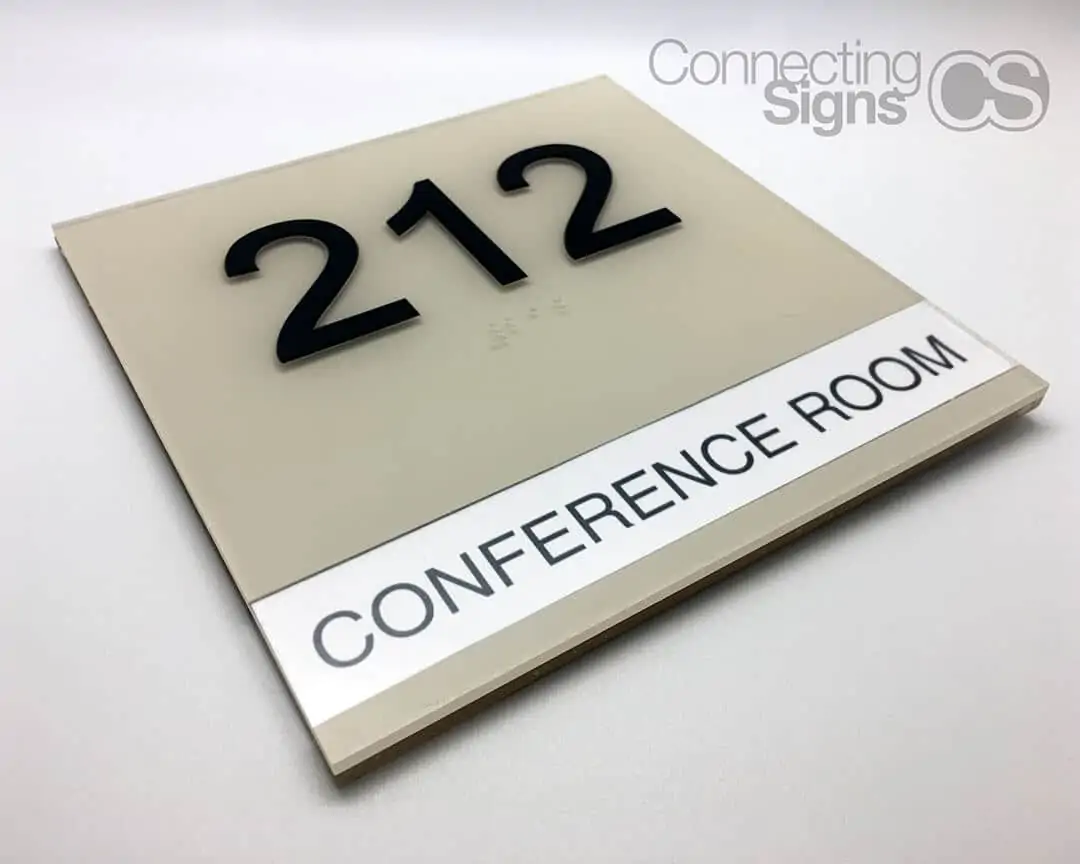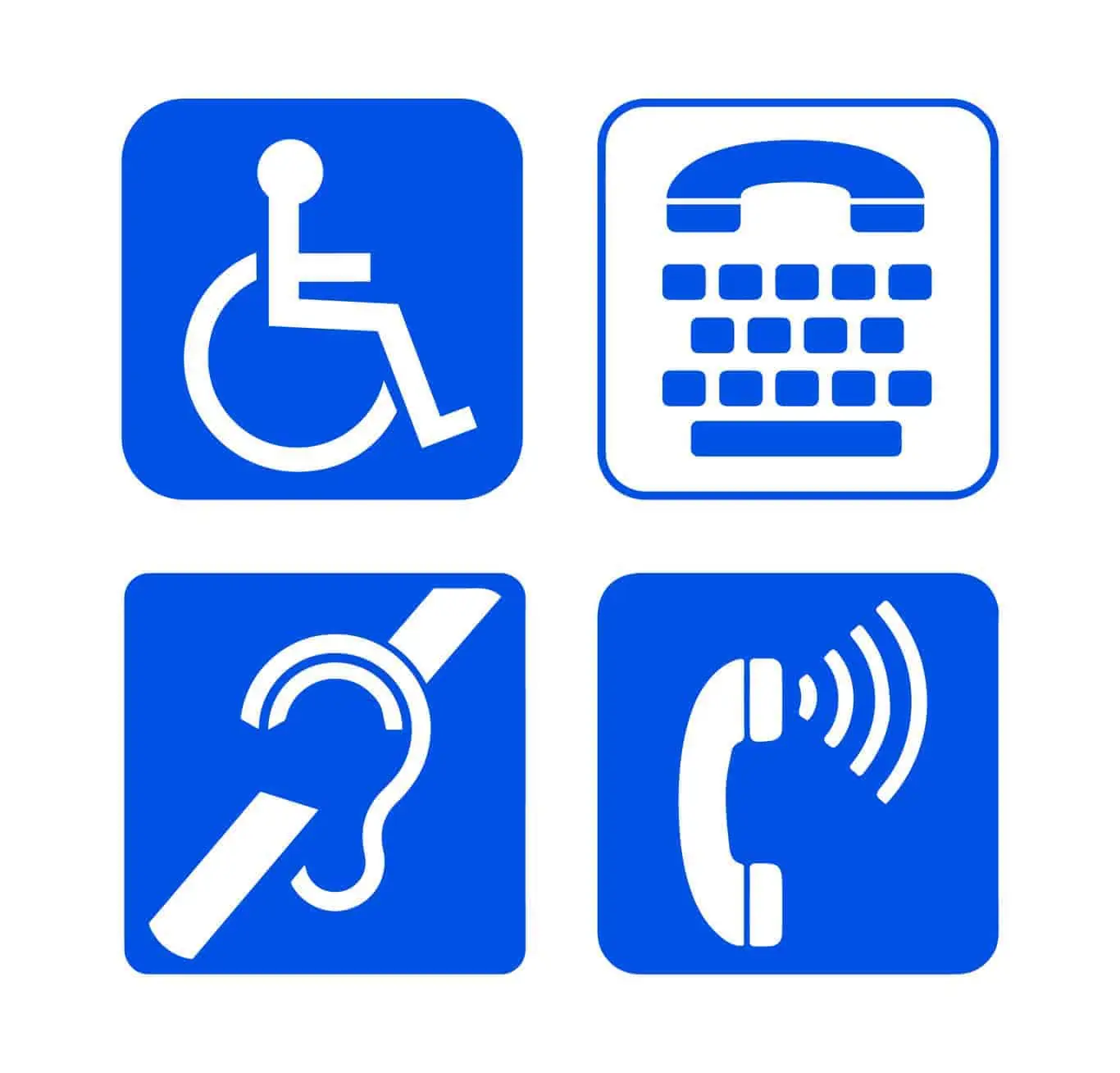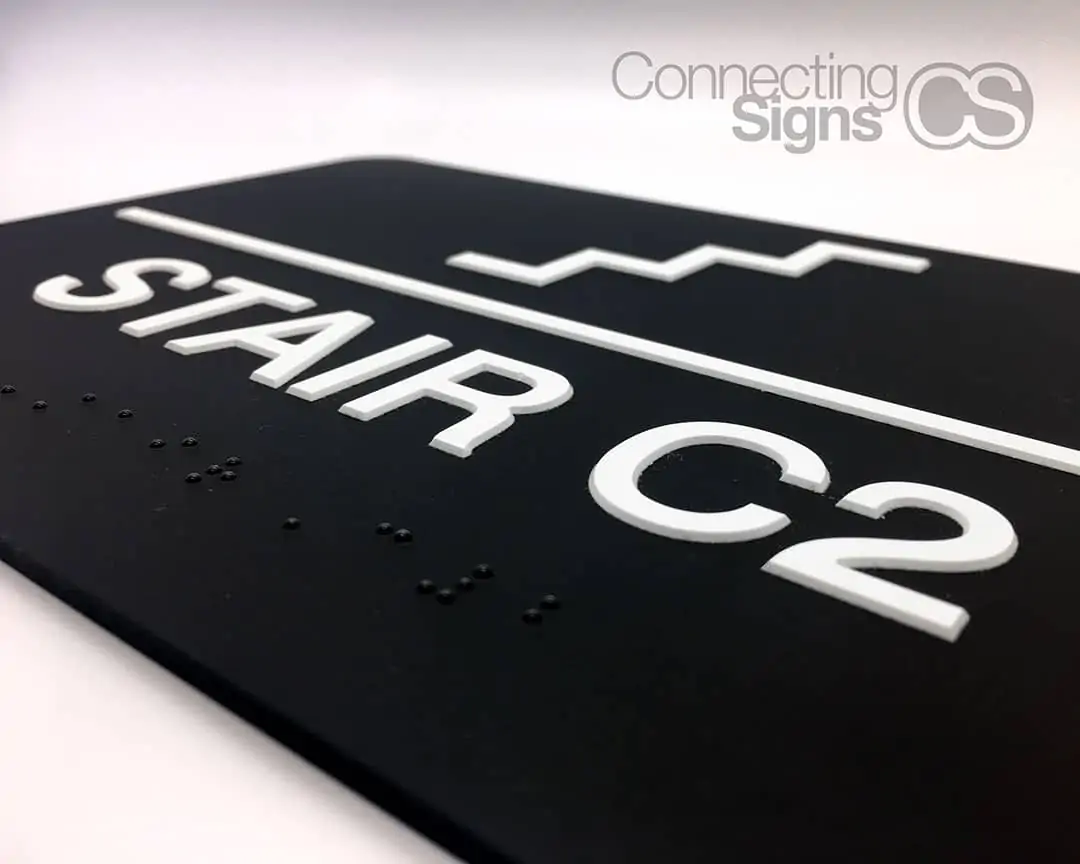ADA signage is everywhere now; a very common part of our lives. This means a lot of us don’t really give the ADA much thought. We know what it is and what it is for and that’s about it. However, there is a lot of history and interesting facts about how the ADA changed modern signage. The following gives an overview of how compliant ADA signs became the standard and why they’re so important.
The history of the ADA
The history of the ADA did not begin on July 26, 1990, at the signing ceremony at the White House. It did not begin in 1988 when the first ADA was introduced in Congress. The ADA story began a long time ago in cities and towns throughout the United States when people with disabilities began to challenge situations that excluded them from their communities. It began with the establishment of local groups to advocate for the rights of people with disabilities. These groups started the independent living movement which provided services for people with disabilities to live and work in the community.
Braille Signs & ADA
ADA is sometimes misunderstood, as some people think it is the same thing as braille signs. Signs with braille and raised characters are the most visible display of the law requiring access to the built environment, but the sign standards in the ADA Accessibility Guidelines, or ADAAG, require much more than just braille and raised characters on some ADA signs.
Almost every sign that would be considered an “architectural” sign must comply with one or another of the ADA Guidelines. In other words, if a sign identifies a permanent room or space of a facility, including exits, directs or informs about functional spaces of the facility, or identifies, directs to, or informs about accessible features of the facility, it must comply.
Because of the rules requiring Braille on some signs, the signage section is looked upon as benefiting persons who are blind and visually impaired. The guidelines also benefit people with mobility impairments or hearing impairments.
ADA Sign Requirements
Listed are areas of the ADA signs law that have requirements (dimensions, etc.); although, not described in detail:
- All ADA signs must have non-glare backgrounds and characters.
- All ADA signs that contain visual characters must have a contrast between characters and their background.
- All ADA signs must have “easy to read” lettering.
- Directional and informational signs can use upper and lower case letters (recommended by many experts for visual readability), but I’ve also read characters should be uppercase. Use the sans-serf font and do not use an italic, oblique, script, or decorative type of characters.
- Character height should be 5/8 inch minimum and 2-inch maximum.
- Character spacing or kerning is required so that characters can be traced with fingers
- ADA signs that identify rooms and spaces are to be located adjacent to the door they identify so they can be located by persons who are functionally blind. For the most part, one sign is used by both tactile and visual readers, so there are compromises to assist tactile readers. However, it is possible to use two separate signs with the same information.
- Braille must accompany the characters (below the characters) and must be Contracted Braille (formerly called Grade II Braille). Look into the dimensions of the dot and the location of the braille.
- There is a standard for mounting requirements for ADA signs. Find out more about the latest codes.
There are Four ADA Symbols:
- The “wheelchair symbol” is the International Symbol of Access used generally to show that persons with mobility impairments can access entrances, restrooms, or pathways.
- The “ear” symbol is the International Symbol of Access for Hearing Loss and is used to show the availability of an assistive listening system.
- The “keyboard” symbol stands for a TTY or text telephone.
- The “phone” symbol with sound waves stands for the availability of a volume-controlled phone.
So, why talk about all this and all the details that go along with being ADA compliant? Because you can be fined for not complying:
Who Enforces ADA Requirements
The U.S. Department of Justice said it will increase the maximum civil penalty to $75,000 for violations of ADA provisions requiring restaurants, movie theaters, schools and other businesses open to the public to be accessible and accommodate people with disabilities. For any subsequent offenses, the fine will jump to $150,000 from a prior cap of $110,000, federal officials said.
Your ADA Sign Experts
Here’s the good thing – just call us! We, not only design, make, and install signs but we understand the requirements with a lot of signage; especially ADA signs! Here’s another good thing – we love making ADA signs. Our router and engraver produces beautiful signage for your indoor office, lobby and throughout your entire building. Give us a call today at 970-493-0133 or request a free estimate on your ADA signs right here!




